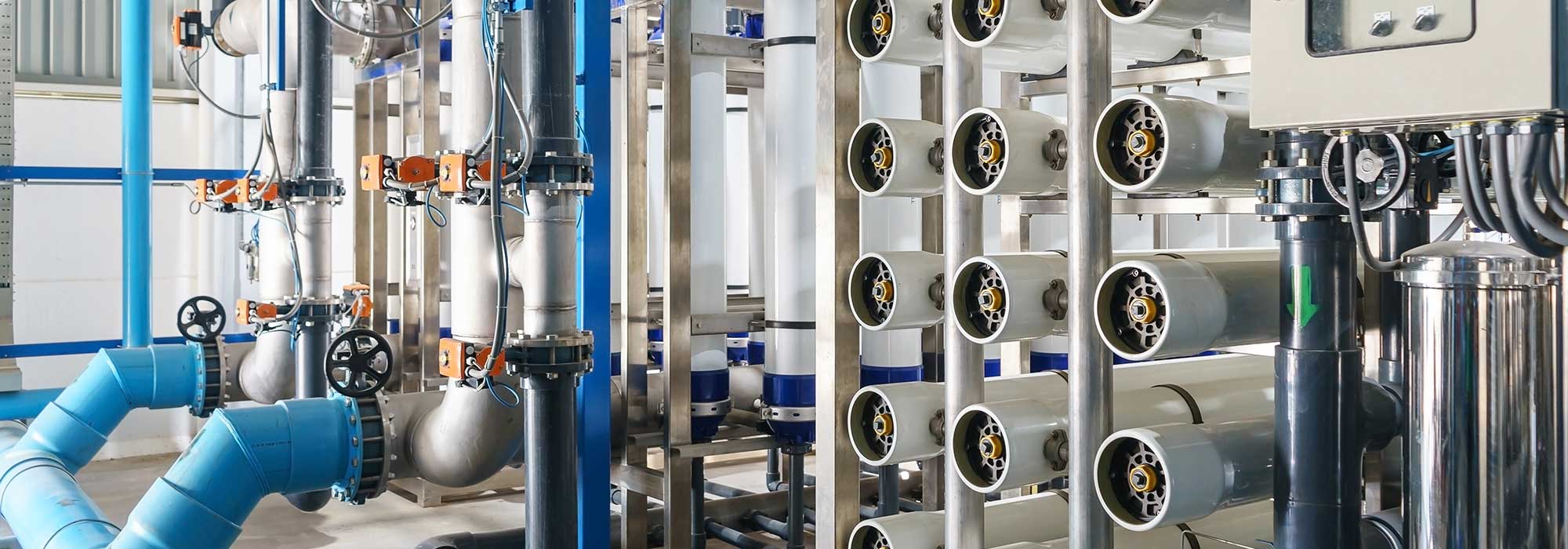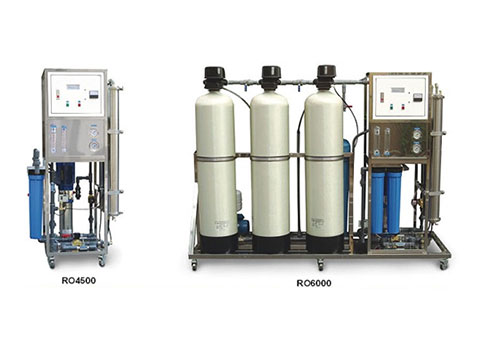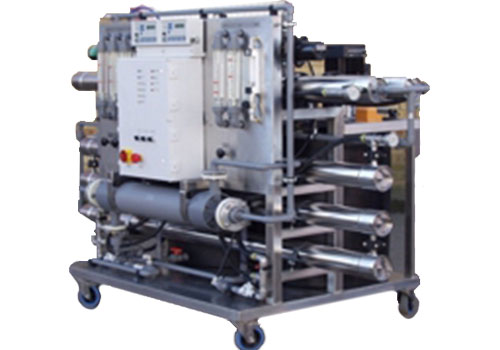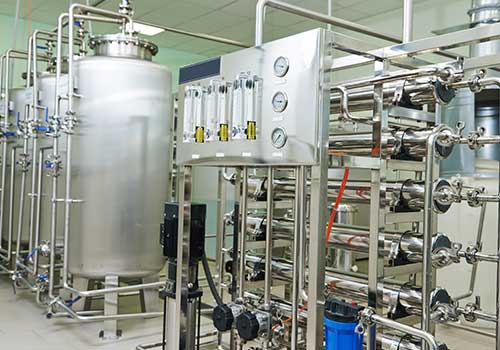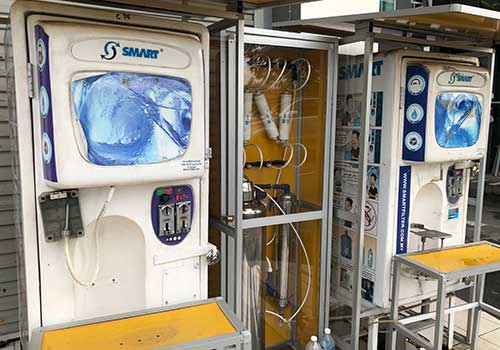RO Plants
Reverse Osmosis is a technology that is used to remove a large majority of contaminants from water by pushing the water under pressure through a semi-permeable membrane. Whereas Osmosis occurs naturally without energy required, to reverse the process of osmosis you need to apply energy to the more saline solution. A reverse osmosis membrane is a semi-permeable membrane that allows the passage of water molecules but not the majority of dissolved salts, organics, bacteria and pyrogens. However, you need to ‘push’ the water through the reverse osmosis membrane by applying pressure that is greater than the naturally occurring osmotic pressure in order to desalinate (demineralize or deionize) water in the process, allowing pure water through while holding back a majority of contaminants. This means that all of those bad chemicals such as lead and even arsenic are removed from the water. Even some parasites are filtered from the water, protecting you from the possibility of contraction. The chemicals removed from the water can be a matter of health and illness. If your water is high in anything that can be harmful, a reverse osmosis system may be right for you.
The reverse osmosis process:
In the reverse osmosis process, cellophane-like membranes separate purified water from contaminated water. RO is when a pressure is applied to the concentrated side of the membrane forcing purified water into the dilute side, the rejected impurities from the concentrated side being washed away in the reject water.
RO can also act as an ultra-filter removing particles such as some microorganisms that may be too large to pass through the pores of the membrane.
RO membranes:
Common membrane materials include polyamide thin film composites (TFC), cellulose acetate (CA) and cellulose triacetate (CTA) with the membrane material being spiral wound around a tube, or hollow fibers bundled together. Hollow fiber membranes have a greater surface area and hence capacity but are more easily blocked than spiral wound membranes.
RO membranes are rated for their ability to reject compounds from contaminated water. A rejection rate (% rejection) is calculated for each specific ion or contaminant as well as for reduction of total dissolved solids (TDS).
TFC membranes have superior strength and durability as well as higher rejection rates than CA/CTA membranes. They also are more resistant to microbial attack, high pH and high TDS. CA/CTA’s have a better ability to tolerate chlorine. Sulphonatedpolysulphone membranes (SPS) are chlorine tolerant and can withstand higher pH’s and are best used where the feed water is soft and high pH or where high nitrates are of concern.
